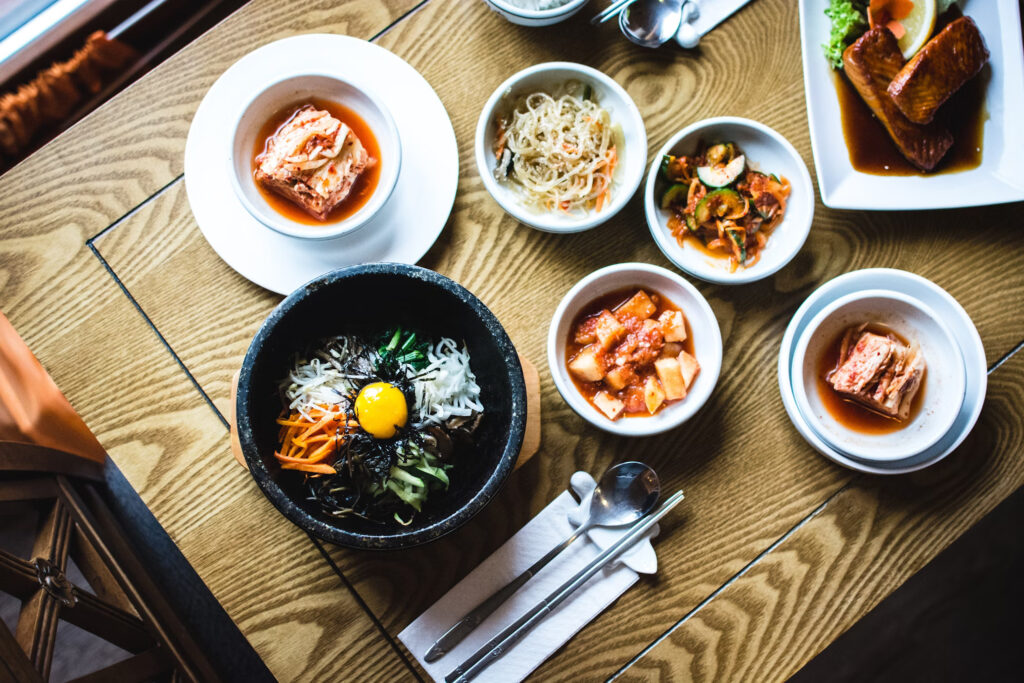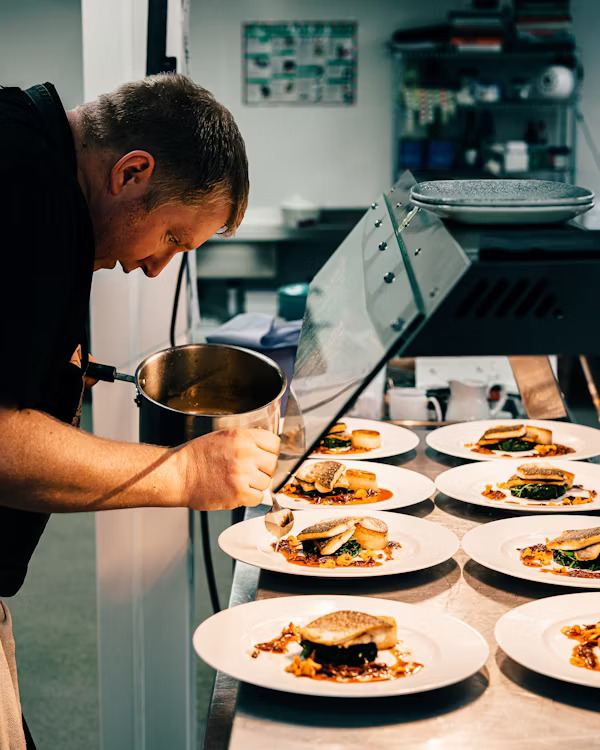After years of navigating shutdowns, shifting mandates, and rising costs, hospitality operators entered 2025 with cautious optimism. But just as a sense of stability was returning, a new challenge emerged: sweeping tariffs that are reshaping the financial landscape.
Universal tariffs implemented since January are not just headline-grabbing discussions. They are significantly impacting the cost of doing business, hitting the hospitality industry where it counts, and putting long-term financial stability at risk.
Operators now face a new balancing act: protecting margins while preserving the guest experience, all in the face of rising costs, supply chain volatility, and increased competition for limited domestic resources.
What Are Tariffs, and Why Do They Matter in 2025?
Tariffs are taxes placed on imported goods. When a U.S. business imports a product from another country, a tax is assessed at the border. That cost is passed along to importers, distributors, and ultimately, the businesses that buy the imported products.
Let’s say a restaurant imports an espresso machine from Europe for $5,000. If there’s a 10% tariff on specific imported machinery, the new cost becomes $5,500. That extra $500 doesn’t go back to the manufacturer overseas. It goes to the U.S. government.
In early 2025, the United States implemented a universal 10% tariff on a wide range of imported goods, including many items used in the restaurant and hospitality industries. The goal is to encourage more domestic production, but the effect is increased costs for businesses that rely on global supply chains.
Rising Costs in Hospitality and Foodservice
In 2025, a comprehensive new tariff policy is transforming the industry’s economics from the ground up. The ripple effect is real. With tariffs impacting the cost of importing everything from kitchen equipment to wine selections that support the entire concept, owners and operators are forced to reconsider their strategies.
And the effects extend beyond the US border. In the UK, equipment manufacturers expect to see a negative impact on products that are exported to the US. Iain Munro, secretary general of The European Federation of Catering Equipment Manufacturers (EFCEM), said “The US tariffs are a key area of concern and discussion within the EFCEM membership. Several major brands that have established themselves in the US market in recent years will undoubtedly feel the impact, particularly in terms of future growth plans.”1
Both the UK and the EU depend on imports from the US for construction materials. As the universal tariffs drive demand for domestic product in the US, the threat of rising costs and supply disruption for US exports loom heavy on the nations that depend on their products. While the world observes the global supply chain impact, some countries have responded with reciprocal tariffs. Though the UK and EU regions have not implemented reciprocal tariffs as of publication, they will undoubtedly have to source secondary suppliers and adjust budgets to account for increased costs.
Key Foodservice Cost Increases
- Coffee
- Seafood & Specialty Produce
- Alcohol & Wine
- Steel & Construction Materials
https://www.fcsi.org/foodservice-consultant/worldwide/tariffs-unsettle-the-industry/ - Overall Food Costs
The list may feel small in isolation, but across dozens of SKUs and thousands of covers, the math compounds quickly
Coffee: Imported Beans Hit with Rising Costs
Coffee, with 99% of the U.S. supply imported, is one of the most visibly impacted commodities in 2025. Specialty coffee roasters, particularly those sourcing beans from Central and South America, have reported price increases of 15–20% due to country-specific tariffs.
For example, an independent roaster in Seattle shared that their green bean cost per pound increased from $2.85 to $3.45 in the span of 45 days, forcing them to either raise prices or absorb the cost 2 . Nationally, chains like Blue Bottle and Stumptown are re-evaluating wholesale contracts and retooling single-origin offerings to mitigate import exposure.
Seafood & Specialty Produce: Imports Disrupted, Menus Adjusted
Shellfish imports from Southeast Asia and Europe—specifically prawns, mussels, and scallops—have taken a brutal hit. Several high-end seafood restaurants in the Northeast and

Pacific Northwest has temporarily removed imported shellfish from their menus, citing both cost and availability issues.
Hospitality groups operating seafood-focused restaurants note tariff-related price hikes and delays led them to replace French and Irish oysters with local East Coast varieties, which have also risen in price due to increased demand.
At the same time, fresh produce importers have reported a 4% rise in costs across high-demand categories like avocados, berries, and citrus fruits from non-exempt regions, affecting both back-of-house purchasing and seasonal limited-time offers.
Wine & Spirits: Tariffs Tighten the Pour
Imported wine and spirits face a direct hit in 2025. The cost of key wine selections from France and other European producers has jumped more than 10%. For operators, this isn’t just about numbers; it’s about identity.
“The new tariffs are squeezing the soul out of our wine list,” says Shanna Nasiri, owner of With Others in NYC, in an interview with the New York Post. With the sudden cost spikes of premium imports, restaurants are trimming cellar selections, reworking pairings, and leaning harder on domestic labels—all while trying to maintain the guest experience intact.
The suggested 20-30, and even 200% additional tariff on imported wines would surely damage the worldwide collaboration that is the very inspiration for the United States wine industry. Thankfully, the anxiously anticipated higher tariffs set for April 2nd are still on hold as of May.
Construction Costs on the Rise
Tariffs in 2025 hit beyond the kitchen, impacting the cost of steel, aluminum, and other essential construction materials. For restaurant operators planning new builds or renovations, the price of imported stainless steel equipment, HVAC components, and structural materials has climbed sharply.
These unexpected increases are putting pressure on capex budgets, causing some of our clients to delay projects, renegotiate contracts, or explore leasing options as a way to preserve cash and reduce exposure.
Overall Food Cost Surge: +2.8% Industry-Wide
According to industry analysts such as the National Restaurant Association, hospitality operators are experiencing a 2.8% year-over-year increase in overall food costs, with produce costs rising by over 4%3
While this might seem modest at face value, it has a compounding effect on already tight prime cost ratios, especially for multi-unit operators. For a fast-casual restaurant group with a 30%
3https://harris-sliwoski.com/blog/u-s-tariffs-effects-on-restaurants-and-hotels/food cost baseline, that 2.8% lift translates to a significant dent in profitability if not countered through price adjustments, menu redesign, or sourcing strategy.

Supply Chain Disruption
Tariffs aren’t just inflating costs—they’re also disrupting availability. Operators are grappling with product instability, and the domestic market is carrying a significant burden from unanticipated increases in demand.
Restaurants that rely on imported specialty items—such as European cheeses, rare spices, or single-origin chocolates—are now facing inconsistent supply and unpredictable pricing. As more operators pivot to U.S.-sourced goods, increased demand is pushing up prices for domestic ingredients, further shrinking the cost advantage of local sourcing.
This one-two punch leaves operators stuck between reformulating menus and absorbing unpredictable increases, all while trying to maintain a seamless front-of-house experience.
The Bigger Picture: A Season of Strategic Discipline
Tariffs are just one part of a larger story in 2025: a tightening economy, rising labor costs, and shifting consumer expectations. For hospitality operators, this isn’t a time to panic—it’s a time to lead with discipline, agility, and data-backed financial strategy.
At Paperchase, we’re working directly with restaurant groups, hoteliers, and multi-unit operators to:
- Model the financial impact of tariff-driven cost changes
- Recalculate food and labor cost benchmarks
- Strategically update menu pricing and vendor contracts
- Plan for cash flow volatility and tax implications

Paperchase can optimize your hospitality operation with day-to-day bookkeeping and accounting service. Learn how here.
How Operators Are Responding
Forced to make major pivots for the second time in five years, operators aren’t waiting to take action. Our team is providing financial support for strategic moves like:
Menu Price Adjustments
Rather than passing the full cost on to consumers, restaurants are partially absorbing price increases and only adjusting pricing modestly while tightening internal cost controls.
Ingredient Substitution & Menu Engineering
Operators are reworking menus to emphasize flexible, high-margin ingredients that can be sourced domestically. In some cases, they’re simplifying offerings to reduce complexity and purchasing risk.
Capital Expenditure Delays
With kitchen equipment now subject to higher tariffs, operators are delaying upgrades or
leasing equipment to reduce immediate capital exposure.
Does Relief Exist?
The good news? There are still meaningful opportunities for operators to protect margins and maintain menu integrity. Restaurant and hospitality operators can strategically shift sourcing to include domestic suppliers, but thanks to the United States-Mexico-Canada Agreement (USMCA), a wide range of goods remain exempt from the 2025 universal tariff.
Below is a breakdown of key categories that remain tariff-free under USMCA when origin requirements are met:
Proteins & Meats
- Beef (fresh, chilled, or frozen)
- Pork and pork products
- Poultry products
- Processed meats (e.g., sausages, bacon, deli cuts)
Fresh Produce
- Avocados
- Tomatoes
- Berries (e.g., strawberries, raspberries, blueberries)
- Leafy greens (e.g., romaine, spinach)
- Bell peppers and chili peppers
Dairy & Dairy Products
- Milk and cream (within quotas)
- Certain cheeses (e.g., queso fresco, panela, cheddar from Canada)
- Yogurts and cultured dairy (with quota limits and rules of origin met)
Dry Goods & Ingredients
- Dried beans and legumes
- Cornmeal and tortillas (from Mexico)
- Rice and certain grains
- Spices and herbs (if grown and processed within USMCA countries)
Bakery & Prepared Goods
- Baked goods (tortillas, bread, pastries made in Canada/Mexico)
- Pre-prepared dough and mixes (origin-compliant)
Beverages
- Fruit juices and flavored waters
- Soft drinks bottled and produced in Canada/Mexico
- Beer and tequila (not subject to the 10% general tariff if produced locally and origin rules are met)
Food-Grade Packaging & Inputs
- Packaging materials (e.g., paperboard cartons, aluminum cans) manufactured in Canada/Mexico
- Biodegradable food containers (must originate entirely in USMCA countries)
Industry Advocacy
The National Restaurant Association has intensified its lobbying efforts to exempt key food and beverage categories from the tariff list, acknowledging that the hospitality sector bears a disproportionate burden under the new rules.
Final Thought: Clarity in a Complex Landscape
The 2025 tariffs feel like yet another external strain on the hospitality industry. But if there’s one thing we’ve learned in a post-pandemic landscape, it’s that operators are innovative and resilient. Owners who invest in financial visibility, operational efficiency, and strategic sourcing will weather this storm, use it to differentiate themselves from their competition, and lead to success.
Let’s plan your tariff strategy. Whether it’s forecasting cost changes, adjusting pricing, or navigating supplier contracts, Paperchase helps you stay profitable in uncertain times. Contact us today to explore how we can help strengthen your financial strategy.
We offer tailored support to help you adapt without compromising your guest experience.



























